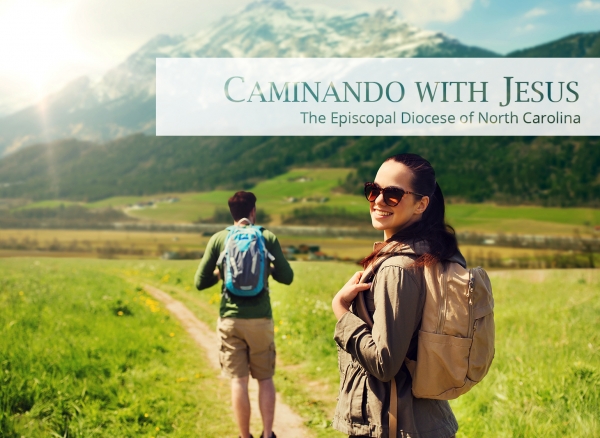CAMINANDO WITH JESUS: Rashomon

CAMINANDO WITH JESUS is a series of reflections on the Sunday Gospel by clergy and laity from across the Diocese.
Sign up to receive CAMINANDO WITH JESUS in your inbox each Wednesday.
John saw Jesus coming toward him and declared, “Here is the Lamb of God who takes away the sin of the world! This is he of whom I said, ‘After me comes a man who ranks ahead of me because he was before me.’ I myself did not know him; but I came baptizing with water for this reason, that he might be revealed to Israel.” And John testified, “I saw the Spirit descending from heaven like a dove, and it remained on him. I myself did not know him, but the one who sent me to baptize with water said to me, ‘He on whom you see the Spirit descend and remain is the one who baptizes with the Holy Spirit.’ And I myself have seen and have testified that this is the Son of God.”
The next day John again was standing with two of his disciples, and as he watched Jesus walk by, he exclaimed, “Look, here is the Lamb of God!” The two disciples heard him say this, and they followed Jesus. When Jesus turned and saw them following, he said to them, “What are you looking for?” They said to him, “Rabbi” (which translated means Teacher), “where are you staying?” He said to them, “Come and see.” They came and saw where he was staying, and they remained with him that day. It was about four o’clock in the afternoon. One of the two who heard John speak and followed him was Andrew, Simon Peter’s brother. He first found his brother Simon and said to him, “We have found the Messiah” (which is translated Anointed). He brought Simon to Jesus, who looked at him and said, “You are Simon son of John. You are to be called Cephas” (which is translated Peter).
The 1951 movie Rashomon is considered one of the greatest movies of all time. In it, several people tell their conflicting versions of a horrific crime, presenting the idea that truth can look very different depending on who is speaking and what their motives might be. What makes the movie special is that it does not, in the end, resolve for the audience what really happened. That is ultimately left for us to ponder.
Sadly, the Rashomon effect in movies and television is almost always used to the exact opposite purpose. We see countless courtroom dramas where the presentation of multiple viewpoints is used as a way to learn “the truth.” The criminal, usually not the one who is on trial, is then hauled away to prison at the end.
John’s Gospel often becomes the Rashomon moment for Bible reflection in that its version of common stories is so different from the other gospels. That is certainly true for the second Sunday after Epiphany. Like last week in Matthew, we begin with John the Baptist in the wilderness. But after that, the details change radically.
Perhaps the biggest difference is that there is no actual baptism of Jesus in this version of events. You may recall that last week, John and Jesus had a whole discussion about who should be baptizing who. Well, this is certainly one way to resolve that problem!
A second Rashomon moment occurs in the call of the first disciples, which here takes place in Bethany, near Jerusalem, and not on the Sea of Galilee. There are no boats to jump out of, no making fishers of people. Andrew becomes the one who brings his brother Peter to meet Jesus. Don’t worry; next week, we’ll read the more familiar, Sunday School-ready story from the Gospel of Matthew.
This is a great moment to remind ourselves that we are reading theology in story form, not history. Our temptation is to try to do what those courtroom dramas do by determining which version is the real one. What a lot of wasted time! In the attempts to discover “the way it actually happened,” we can lose sight of why the story is being told at all. In so doing, we replace the search for truth with a fact-finding mission.
So what is the truth that is important to John here? That Jesus be recognized as, in order, the one who baptizes with the Holy Spirit, the Son of God, the Lamb of God, Rabbi and the Messiah. Whew! Including so many titles in such a short passage is not an accident but the author’s decision to bring together a variety of biblical, cultural and historic threads in the one person of Jesus. Perhaps this is the best Rashomon moment of all; each of those descriptors give us partial views of who Jesus is. Instead of trying to wrap them up neatly, John invites us to consider them all as we continue to seek Jesus today.
The Rev. Kevin B. Matthews is the campus minister at St. Mary’s House, the ministry of the diocese for colleges and universities in Greensboro.
Tags: Caminando with Jesus
